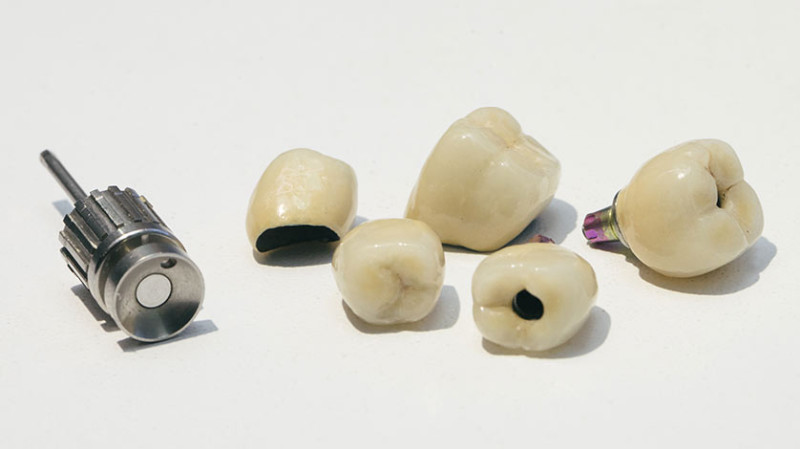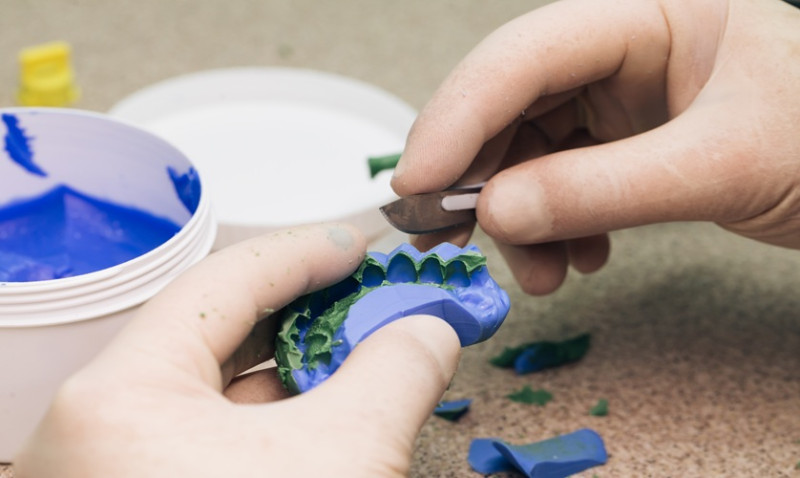
If you're dealing with tooth damage or decay, your dentist might suggest a dental crown or a filling to restore your smile and protect the tooth. At first glance, crowns and fillings may seem similar – both are common dental restorations – but they serve different purposes and come with varying degrees of durability, cost, and application. Whether you're a busy professional, a designer juggling demanding projects, or even a DIY enthusiast with a knack for fixing things, understanding the difference between the two can help you make more informed choices when it comes to dental health.
What is a Dental Filling?
A dental filling is typically used when a tooth has minor to moderate damage caused by decay, small cracks, or wear. During the procedure, your dentist removes the damaged or decayed portion of the tooth and fills the area with a material such as composite resin, amalgam, gold, or porcelain. Fillings are a conservative treatment that allows you to retain most of your natural tooth structure.
One of the main advantages of fillings is that they can often be completed in a single visit. This makes them ideal for individuals with tight schedules – think tradesmen rushing between jobs, or young professionals trying to squeeze in a dental appointment during lunch.
Modern fillings, especially tooth-coloured composite ones, are designed to seamlessly blend with your natural teeth, making them an aesthetically pleasing option. They're also relatively inexpensive, which suits most dental insurance plans and personal budgets.
However, fillings do have limitations. They may not be suitable for extensive decay or damage, as they rely on the remaining structure of the tooth for support. In such cases, a different solution is needed – such as crowns.
What is a Dental Crown?
A dental crown is more comprehensive than a filling. It’s a custom-made "cap" that fully encases a damaged tooth to restore its shape, size, strength, and appearance. Crowns are usually recommended when a tooth is severely decayed, broken, weakened by a large filling, or after a root canal treatment.
The process for getting a crown generally involves two visits. During the first appointment, the tooth is reshaped to make room for the crown, and an impression is taken. A temporary crown is placed while the final crown is manufactured – often from materials like porcelain, gold, or zirconia. The second visit involves fitting and permanently bonding the crown onto the prepared tooth.
This option is ideal for those who need a longer-lasting and more durable restoration – perfect for young architects or designers who need their smile to make an impression, as well as manual workers who require a solution that can withstand physical demands.
Aside from functionality, crowns also shine in aesthetics. A well-crafted porcelain crown can mimic the natural translucence and colour of your existing teeth, maintaining the look and feel of your smile. They offer greater protection than fillings and can last anywhere from 10 to 15 years or more with proper care.
Which One is Right for You?
Choosing between a crown and a filling often boils down to the extent of damage and your dentist's professional recommendation. Minor cavities and surface-level tooth damage are typically treated with fillings. If your tooth has experienced major decay, multiple fillings, or structural compromise, then a crown may be the more appropriate – and long-lasting – solution.
Below is a simple comparison table to help highlight the differences between the two options:
| Feature | Dental Filling | Dental Crown |
|---|---|---|
| Purpose | Repairs minor cavities or small damage | Restores and protects severely damaged or decayed teeth |
| Coverage | Fills a portion of the tooth | Encapsulates the entire tooth |
| Durability | 5–10 years with proper care | 10–15+ years with proper care |
| Procedure Time | Usually one visit | Typically two visits |
| Cost | Lower | Higher |
| Material | Composite, amalgam, porcelain, gold | Porcelain, ceramic, metal, zirconia |
| Ideal For | Small cavities or minor damage | Extensive decay, fractures, or post-root canal |
The Role of Your Dentist in the Decision
Your dentist is your best ally when it comes to deciding whether you need a filling or a crown. They will assess your tooth’s condition using visual inspections, X-rays, and sometimes digital scans. Their goal is not only to repair the damage but also to preserve as much of your natural tooth structure as possible while ensuring long-term oral health.
Be open with your dentist about your needs – whether time constraints, budget limitations, or cosmetic concerns. For example, a young home improvement specialist might prioritise tooth strength for physical work, while a design professional might be focused on appearance during client meetings.
Final Thoughts: Protect Your Investment
Whether you go for a filling or a crown, maintaining good oral hygiene and visiting your dentist for regular check-ups will extend the life of any dental restoration. Brushing twice a day, flossing daily, and avoiding very hard or sticky foods can prevent failure or future issues.
Think of your teeth like a well-crafted project – they require quality materials, precision in execution, and regular care. Just like patching up a cracked wall won’t work long-term if the foundation is unstable, a tooth with significant internal damage might need more than a ‘quick fix’ with a filling. That’s where crowns come in – durable and reliable, especially when you need your smile to stand the test of time.
Making the right choice between a crown and filling can save you discomfort, time, and money in the long run. Knowing the difference puts the power in your hands – whether you're onsite, on Zoom, or just enjoying a moment of downtime.






